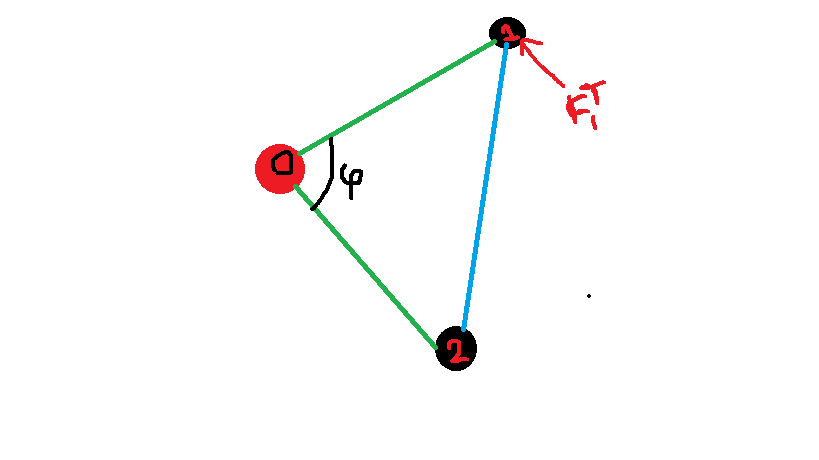Suppose you have an axis $O$, and two masses $m_1$ and $m_2$, which are joined to $O$ by a rod of $r_1$ and $r_2$, and $m_1, m_2$ are joined by $r$ (rods are maseless and rigid). Now, $\angle m_1Om_2 = \phi$, and you push $m_1$ by tangential force $F_1^T$. They're shown in the picture. 
Now, as the entire configuration is rigid and a force is applied, both the masses will rotate with the same angular velocity (possibly varying over time). As per my understanding, the only forces acting on $m_2$ is the tension $\vec{T_2}$ on the rod $Om_2$ and the tension $\vec{T}$ on $m_1m_2$ rod, (which are directed towards $O$ and $m_1$ respectively) which combines for $\vec{F_{2NET}}$. I have broken $F_{2NET}$ into radial component $F_2^r$ (which is useless), and tangential component $\vec{F_{2N}^{T}}$. Now, $\vec{F_{2N}^{T}}$ will be only force that contributes to $m_2$'s rotation.
Now the thing that I don't understand is that when $\phi \rightarrow 180$, to get a considerable amount of tangential component $\vec{F_{2N}^{T}}$, atleast one of $T, T_2$ has to be very very large (should be infinity when $\phi = 180$). But isn't this physically impossible ? What's more confusing to me is that I can make this makeshift model using pencil and clay lumps and it rotates perfectly even when $\phi \approx 180$ .


